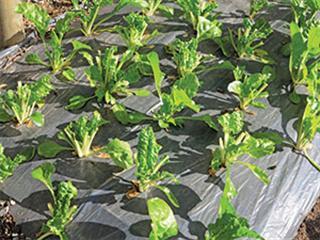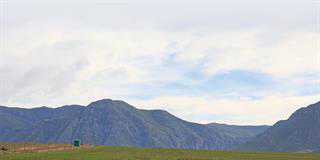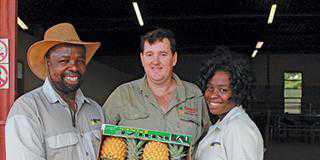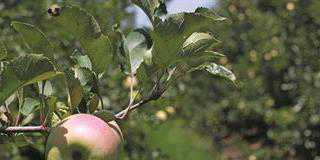
It is difficult to imagine a more efficient method of crop production than hydroponics. Developed over 70 years ago, it is used worldwide to produce vast quantities of vegetables under a wide variety of climatic conditions. Yet industrial and agricultural researcher and developer Helmuth Rohrer claims that he has developed a production system that is more efficient, simpler and produces higher yield. In addition, it is better suited to arid, windy conditions.
Rohrer’s system, named Organic Medium Enclosed Trough (OMET) farming, is installed in St Helena Bay on the West Coast. The site is 560m from the beach and 11m above sea level, in the path of gale-force winds and Cape winter storms – yet is producing a significant quantity of crops on a relatively small area.
Farmers’ scepticism
When Rohrer moved to the West Coast in 2009, he already had a decade of experience in hydroponics. But due to the extreme aridness of the area, he was determined to grow plants with as little water as possible. “I began experimenting with a no-drainage system, and the farmers here said my idea wouldn’t work because plants need drainage to grow,” he recalls. “But growing three tons of Swiss chard a month in winter on just 1 110m² proves the OMET method does work.”
Winter rainfall in the West Coast is about 180mm.

The growth medium is convex in order to prevent rain water damming on the mulch, which will cause over-irrigation. Rohrer devised this basic tool, which he calls a ‘boeppens’ (potbelly), to shape the growth medium uniformly before mulching.
The soil is sandy with little nutritional value, and water is scarce and brackish. Summers are hot, windy and dry, with temperatures easily exceeding 40°C. Bearing these conditions in mind, Rohrer created a unique, flat-topped multispan shade-cloth tunnel with tapered sides. This design deflects wind and virtually eliminates wind lift. Grey shade- cloth keeps the crop inside the tunnel cool in summer. A closed trough system virtually eliminates evaporation, so very little water is required to grow crops.
Structure and materials
The OMET tunnel has a unique wind-resistant, spider-web design with a flat roof, which allows adequate air circulation inside the tunnels. The perimeter poles are secured with steel wire anchored in the ground, while a wire web secures the rest of the poles and the shade cloth. Only the four corner poles are planted into the ground; the others rest on the ground secured by the wire web structure. This simple, cost-effective design allows the structure to be easily dismantled and moved.
Rohrer uses 40% grey shade cloth as a cover, and 50% shade cloth of any colour as a wind breaker on the sides. Next, sheets of 500µ (0,5mm) black polyethylene are laid where the troughs are to be. A wire frame is tensioned around the perimeter of each trough and anchored with a steel peg at each of the four corners. In between the corner pegs, 10mm trough pegs are driven into the ground 3m apart. The wire is between 100mm and 150mm above the ground, depending on the depth of the trough required. Then the plastic undersheet is folded up over the wire and stapled in place to form a trough.
The growth medium – a mixture of matured cow dung, topsoil and green material composted at a temperature of 48°C and turned two or three times – is placed in the troughs. The drip irrigation pipes are laid onto the convex-shaped growth medium before mulching. Dripper lines are spaced 300mm apart on the line, as are the emitters. Each dripper emits 1l/hour.
Curved Troughs for runoff
Troughs are up to 50m long on a gentle gradient. They are shaped with a simple curved tool (nicknamed the boeppens – potbelly) to create a convex surface to facilitate water runoff, and recycled 250µ (0,25mm) polyethylene sheeting is used as a temporary plastic mulch to cover and protect the medium, as well as retain moisture, prevent weed growth and assist in temperature control.

An OMET tunnel, covered in 40% grey shade cloth.
Edges are tucked in to keep the bed completely enclosed. Using a template, holes 150mm or 200mm apart – depending on the crop planted – are poked into the sheet mulch. “I plant one seedling per hole, using a template to space them accurately. This way I know exactly how many plants I have planted and what the yield will be,” explains Rohrer.
After the harvest, the sheet mulch is removed and the growth medium is gently turned and aerated for two weeks in sunlight. If earthworms are present, the growing medium must be kept moist. More compost is added to replace medium lost when old plants were uprooted. The beds are then raked with the boeppens tool to create a convex surface again.
The beds are covered with sheet mulch, holes are pierced in the mulch and new seeds are planted.
Rohrer’s OMET troughs are 1,6m wide and the paths between them are 400mm wide. The centre can be reached from either side. Beds are 25m long to better control the water supply, as the drippers at the end of a longer line emit less water due to the pressure loss along the line.
Advantages
The once-off setup costs are far lower than that of a hydroponics system, Rohrer maintains. Only the thin sheet mulch is replaced with a new crop; everything else is re-used. All plant waste goes into the compost that feeds the soil again.
The sheet mulch used in the OMET system virtually eliminates evaporation, dramatically reducing the water requirements of the crop. Its smooth surface deters crawling insects and prevents weed growth, eliminating the need for weeding or herbicides.
Heavy rainfall or drought has minimal impact on the system and the enclosed trough keeps the soil at a constant, optimal temperature. Rohrer notes that earthworms thrive in the growth medium, a clear sign of healthy, living soil. Although the system is totally enclosed and there is no drainage, it has all the nutrients healthy plants need. As mentioned, the convex shape of the beds permits water runoff.
“Virtually anything can grow in an OMET,” explains Rohrer. “For deep-rooted plants, one can use grow bags, but the principle remains the same. It’s even suitable for fruit trees. “I grow everything from Swiss Chard in winter to fancy lettuce, cos lettuce, baby brinjals and marrows, patty pans, capsicums, green beans, basil and baby pumpkins to supply my market, which includes hospitality establishments and deli food outlets.
“The only crops I don’t grow in the OMET are those that don’t need protection from the elements, such as cabbage, potatoes or iceberg lettuce. It’s unnecessary and uneconomical to grow these in an OMET.”
Minimal water
In summer, crops in the OMET are watered for about 15 minutes a day using desalinated borehole water. Irrigation is through the dripper lines laid on top of the growth medium under the sheet mulch. Irrigation values depend on crop type and size. Each dripper emits 1l/ hour, translating into 3l/m² water daily in summer and 1,5l/ m² water in winter, as temperatures are lower and plants don’t transpire as much as in summer. No fertiliser is applied, as the plants receive the required nutrients directly from the growing medium.
Parasites
“We only do pest control when we actually see pests,” says Rohrer. “We use only non-chemical natural spray products. Sometimes, we get red spider mite, aphids, hairy worms and flies. “Because OMET is a closed trough system, the micro-organisms in the soil suppress soil-borne diseases such as root rot.”
According to Rohrer, the system is highly efficient, with virtually no water loss. “We can now grow fancy lettuce from seedling to crop size in 18 days in summer. The fastest we could do so under hydroponics was 24 days. Swiss chard takes about 4,5 weeks in summer and six weeks in winter from seedling to cropping, and we harvest an average of 200g per plant per month year-round.
“We harvest the chard leaves many times until the base of the stem becomes too large, then we grow a new plant. “In two-and-a-half years we haven’t rotated the Swiss chard crop. It hasn’t been necessary.” The sheet mulch helps to keep the soil above 12°C.
Few employees required
Two trained operators easily manage a 1 000m² OMET unit, including trough preparation, mulching, planting, irrigating, cropping and mass packaging in the case of spinach and Swiss chard. More workers are needed for fancy lettuce, which has to be cropped, washed, dried, sorted, inspected, pillow- packaged, weighed, labelled and dispatched. The OMET system can be used anywhere, maintains Rohrer, as long as there’s a little direct sunlight and clean water.
“It may on the surface appear similar to hydroponics, but in practice it’s a world apart,” says Rohrer. “It requires much less to run and produces a tastier crop – and more of it.
For more information, visit www.c-omet.co.za or email [email protected].













